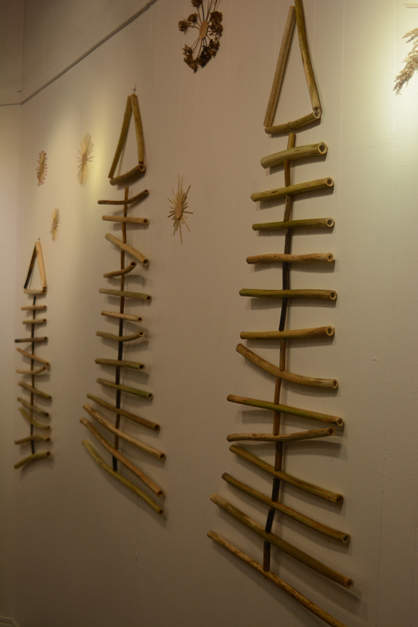Hanging from the ceiling of the Homer Council on the Arts, a 4-foot wide, multifaceted sculpture looks like a temple from a cosmic fantasy. Based on the geometric shape of an octahedron, the piece, called Puzuri, comes not from the imagination of a Hollywood set designer, but from an ancient Latvian solstice tradition.
To brighten up HCOA this holiday season, artist and HCOA volunteer Gundega Snepste reached back into her heritage. Puzuri pre-dates Christianity and has been used as a solstice decoration in Latvia and other Baltic Sea countries since ancient times, Snepste said.
Made of rye grass straw, Puzuri can be as elaborate as the large centerpiece or as simple as a ring of grass stalks. To add a Kachemak Bay touch, Snepste also used kelp, pushki, alder berries and lupine seed pods. A grove of kelp Christmas trees fills one wall. She also made three-dimensional stars. String is threaded through pieces of hollow grass straw and tied together.
“Puzuri can be as simple or elaborate as the time and fantasy of the makers go,” Snepste said.
The winter-solstice art also has a summer-solstice connection. At midsummer, it’s traditional for Latvians to burn Puzuri in big solstice bonfires.
Snepste’s Puzuri show is on exhibit at HCOA through January. A Second Friday reception also will held 5-7 p.m. Jan. 8 with a silent auction of the work. Sign up for future Puzuri making workshops, too.


